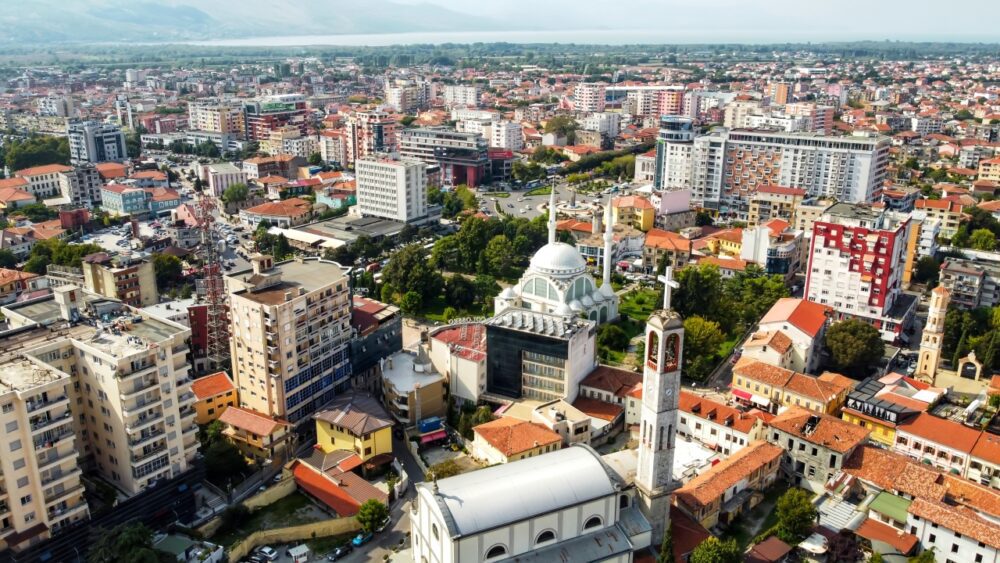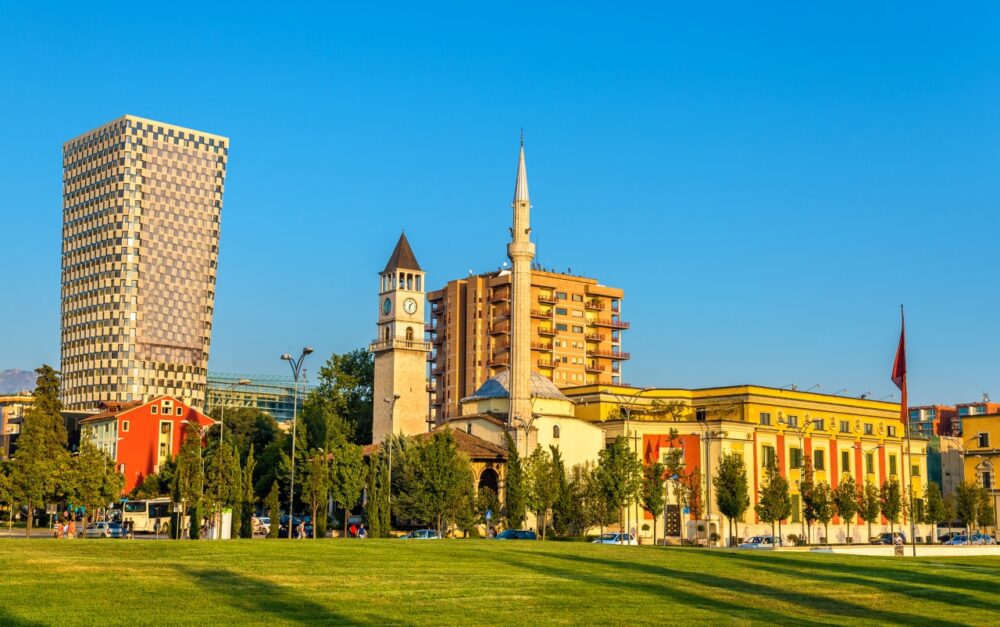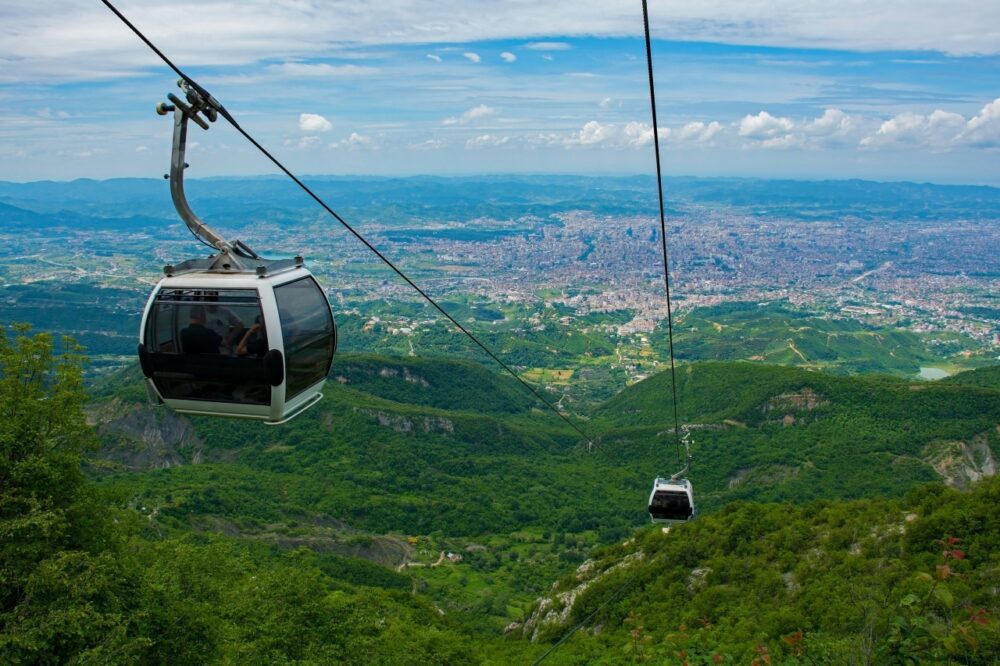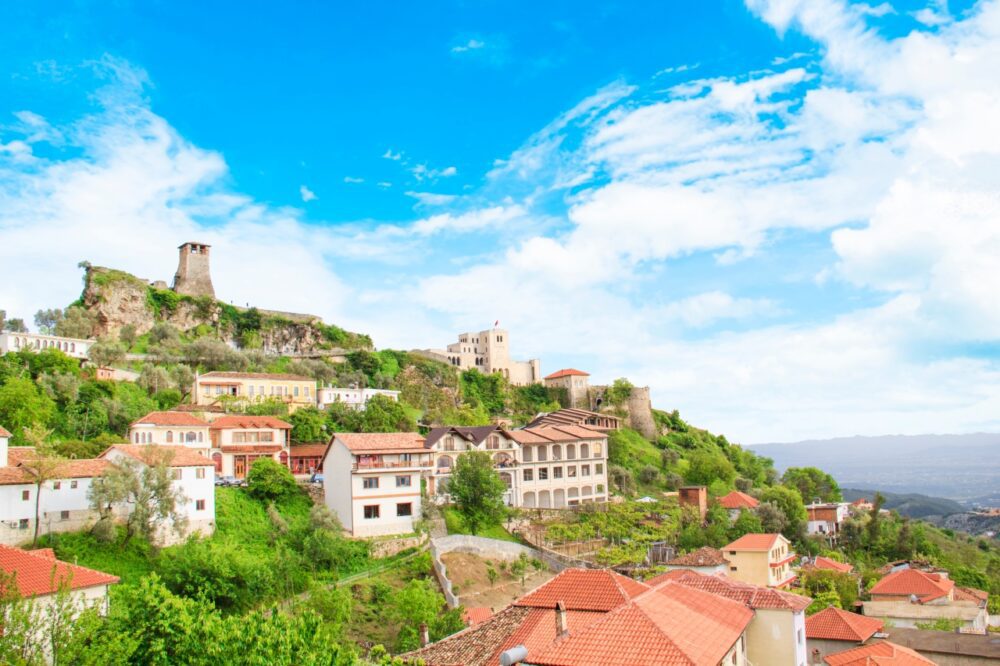
Tirana, the vibrant capital of Albania, is a city full of surprises. Known for its colourful buildings, rich history, and dynamic energy, Tirana offers a unique blend of Ottoman, Italian, and communist-era influences. From strolling through Skanderbeg Square and visiting the fascinating Bunk’Art museums to enjoying the lively café culture and nearby Dajti Mountain, Tirana has something for every kind of traveller. But with so many emerging destinations in the Balkans, you might wonder: is Tirana worth visiting? In this post, we’ll uncover what makes Tirana special and help you decide if it’s the right stop for your next adventure.
Table of Contents
Pros – Reasons You Should Visit Tirana
1. A Unique Blend of Cultures and Influences

Tirana is a fascinating mix of Ottoman, Italian, and communist-era influences, giving it a unique character that sets it apart from other European capitals. The city’s history is reflected in its architecture, traditions, and even its food, creating an exciting blend of past and present.
Walking through the city, I saw brightly painted buildings, grand Italian-style boulevards, and Soviet-era apartment blocks all in the same neighborhood. The contrast between old and new is striking, and you can feel the energy of a city that is rapidly modernizing while still holding onto its past. Unlike many other European capitals that feel overly polished, Tirana has an authentic, evolving charm that makes it a joy to explore.
2. The Warm and Welcoming Locals
Albanians are known for their hospitality, and Tirana is no exception. The people are friendly, curious, and always willing to help, even if there is a language barrier. Whether you’re asking for directions or just striking up a conversation at a café, locals go out of their way to make visitors feel welcome.
One of my favorite moments was when I stopped at a small family-run bakery and, despite the owner not speaking much English, he insisted on giving me a free pastry to try. Moments like these are common in Tirana, where the warmth of the people makes you feel like more than just a tourist.
3. A Vibrant and Affordable Café Culture
Tirana has a thriving café culture, with stylish coffee shops on nearly every street. Influenced by Italian traditions, coffee is taken seriously here, and the city’s many cafés are perfect for relaxing, people-watching, or getting a taste of local life.
I found a cozy spot in Blloku, the city’s trendiest neighborhood, and enjoyed a perfectly made espresso for a fraction of what I would have paid in Western Europe. Unlike in some cities where cafés feel rushed or overly commercialized, Tirana’s coffee scene is social and unpretentious, making it easy to linger and soak in the atmosphere.
4. An Incredibly Affordable Capital Compared to the Rest of Europe
Tirana is one of the most budget-friendly capitals in Europe, making it a great destination for travelers looking for quality experiences without high costs. Everything from accommodation and food to transport and attractions is significantly cheaper than in Western Europe.
I had a full meal at a traditional Albanian restaurant, including grilled meat, fresh bread, and local wine, for less than what I’d pay for a single dish in Paris or London. Even hotels and Airbnb rentals are very affordable, allowing visitors to enjoy a high standard of travel at a much lower price. If you want a European getaway without breaking the bank, Tirana is an excellent choice.
5. The Colorful and Lively Blloku District
Once a restricted area for communist elites, Blloku has transformed into Tirana’s most stylish and energetic neighborhood, filled with trendy bars, restaurants, and boutique shops. It’s the heart of the city’s nightlife and the best place to experience its modern, youthful energy.
I spent an evening hopping between different bars, each with its own unique vibe. Some had live music, others had rooftop terraces with great city views, and all of them were packed with locals enjoying the night. Blloku has a lively but laid-back atmosphere, making it a great place to experience Tirana’s social scene.
6. Fascinating Communist History and Unique Museums
Tirana played a key role in Albania’s communist history, and the city is full of reminders of its past. Many attractions offer a glimpse into the country’s decades of isolation under dictator Enver Hoxha, making it a must-visit for history lovers.
I visited Bunk’Art 1, a massive underground bunker turned museum that tells the story of Albania’s communist era through immersive exhibits and personal stories. Exploring the dark tunnels and seeing artifacts from the regime was a haunting but eye-opening experience. Another highlight was the House of Leaves, a museum dedicated to the secret police and surveillance tactics used during the dictatorship. If you’re interested in Cold War history, Tirana offers some of the most unique museums in Europe.
7. Delicious and Hearty Albanian Cuisine
Albanian food is a delicious mix of Mediterranean and Balkan flavors, with influences from Italy, Greece, and Turkey. Traditional dishes are hearty, fresh, and incredibly satisfying, and Tirana has plenty of great restaurants where you can try them.
I had tavë kosi, a baked lamb and yogurt dish that was rich and comforting, and byrek, a flaky pastry filled with cheese and spinach, which was perfect for a quick snack. The city’s restaurants range from traditional taverns serving homemade dishes to modern spots experimenting with local ingredients. No matter where you eat, the food in Tirana is flavorful, affordable, and made with passion.
8. The Stunning Mount Dajti National Park is Just a Cable Car Ride Away

For those who love nature, Tirana offers easy access to Mount Dajti, a beautiful national park just outside the city. A scenic cable car ride takes you to the top, where you’ll find hiking trails, breathtaking views, and even a rotating restaurant overlooking the valley.
I took the Dajti Ekspres cable car, and the ride itself was worth the trip, offering panoramic views of Tirana and the surrounding mountains. At the top, I found a peaceful escape from the city, with fresh mountain air and plenty of places to relax. Whether you’re up for an adventurous hike or just want to enjoy a quiet moment with a stunning view, Mount Dajti is a perfect day trip.
9. A City That Feels Safe and Easy to Explore
Despite being a busy capital, Tirana feels very safe, even at night. Crime rates are low, and locals are friendly and helpful, making it a comfortable city for solo travelers and families alike. The main areas are pedestrian-friendly, and getting around is easy, whether by walking, bus, or taxi.
I walked around the city late into the evening and never felt unsafe. Even in crowded places, the atmosphere was relaxed, and there was little of the typical tourist scams or pickpocketing that you might find in larger European cities. Tirana’s welcoming and safe environment makes it an enjoyable place to explore freely.
10. A Great Base for Exploring the Rest of Albania

Tirana is well connected to the rest of Albania, making it a great starting point for trips to the country’s stunning beaches, mountains, and historical sites. From here, you can easily reach places like Berat, Gjirokastër, the Albanian Riviera, and Lake Ohrid.
I took a day trip to Krujë, a historic town with a beautiful castle and an old bazaar selling handmade crafts. It was a short drive from Tirana, but it felt like stepping into another world. Whether you want to explore ancient towns, unspoiled beaches, or dramatic mountain landscapes, Tirana makes it easy to experience Albania’s diverse beauty.
Cons – Things to Consider When Visiting Tirana
1. Chaotic Traffic and Unpredictable Driving Culture
Tirana’s roads can be overwhelming, especially for visitors not used to the city’s fast-paced and often unpredictable traffic. The driving culture is aggressive, with cars frequently ignoring lane markings, honking constantly, and pedestrians having to be extra cautious when crossing the street.
I found that even at crosswalks, cars didn’t always stop, which meant waiting for a gap in traffic or making eye contact with drivers to ensure they’d let me pass. Traffic congestion is also a major issue, particularly during rush hour, when streets become packed with cars, buses, and motorbikes weaving between lanes. While getting around on foot is manageable in the city center, if you need to take a taxi or drive yourself, be prepared for a bit of chaos on the roads.
2. Limited Public Transport and Few Pedestrian-Friendly Areas
Tirana lacks a well-developed public transport system, making it harder for visitors to get around efficiently. The city has a network of buses, but they can be difficult to navigate for non-locals, as there are no clear schedules, route maps, or ticket machines at most stops. Taxis are an option, but some drivers overcharge tourists, so it’s best to agree on a price beforehand or use a ride-hailing app like Speed Taxi.
I relied mostly on walking, but outside the main areas, sidewalks were uneven or non-existent, forcing pedestrians to walk on the side of the road in some places. In Blloku and Skanderbeg Square, walking was pleasant, but in other areas, the city didn’t feel as pedestrian-friendly as other European capitals. If you’re someone who prefers reliable public transport or well-maintained walking paths, Tirana may require a bit more patience.
3. The City Can Feel Overwhelmingly Noisy and Busy
Tirana is a lively and energetic city, but for some visitors, this can also be a downside. The constant honking, construction noise, and packed streets can make it feel chaotic, especially compared to quieter European destinations. While this adds to the city’s character, it can be a bit overwhelming if you prefer a more peaceful environment.
I stayed in an Airbnb near a main road, and even late at night, the sound of traffic and occasional loud music from passing cars was noticeable. In some areas, street vendors, motorcycles, and music from cafés create a constant buzz, making it harder to find quiet spaces to relax. If you’re sensitive to noise, booking accommodation in a quieter part of the city or bringing earplugs might be a good idea.
4. Air Pollution and Dust Can Be an Issue
Tirana’s rapid growth and ongoing construction projects have led to noticeable air pollution and dust in some parts of the city. The combination of heavy traffic, old diesel vehicles, and construction sites can result in poor air quality, especially on hot, windless days.
I noticed that after walking around for a full day, my throat felt a bit dry, likely due to the dust and exhaust fumes from the busy streets. The problem is more noticeable in the summer when the heat traps pollution in the air. While it’s not unbearable, visitors with respiratory issues should take precautions, and checking air quality levels before heading out might be a good idea on certain days.
5. The City Lacks Major Landmarks and Can Feel Less Polished Than Other Capitals
Tirana is an interesting city with a rich history, but unlike European capitals such as Rome, Paris, or even Prague, it lacks the grand landmarks and well-preserved historic sites that many travelers expect. Much of the city was shaped by its communist past, meaning you won’t find centuries-old castles, towering cathedrals, or grand palaces.
I enjoyed exploring Tirana’s unique blend of architecture, but I also noticed that parts of the city felt unfinished or in transition. Some areas had crumbling sidewalks, graffiti, and older buildings that hadn’t been renovated in years. While this raw, evolving atmosphere adds to Tirana’s charm, travelers looking for a more traditional, picture-perfect European city might find it less visually impressive.
When to Visit Tirana
The best times to visit Tirana are spring (April to June) and autumn (September to October) when the weather is warm and pleasant, making it perfect for exploring the city’s parks, plazas, and outdoor cafes. Summers (July to August) can be hot but lively, with locals heading to nearby coastal areas, leaving Tirana slightly quieter. Winters (December to February) are mild, with occasional rain, offering a more relaxed and authentic experience without the crowds.
How to Get to Tirana
Tirana is served by Tirana International Airport Nënë Tereza (TIA), located 17 kilometres northwest of the city. Airlines such as Wizz Air, Ryanair, and Austrian Airlines connect Tirana with major European cities. From the airport, you can take the Rinas Express bus, which runs every hour to the city centre in about 30 minutes, or opt for a taxi, which is faster but more expensive. Tirana is also accessible by long-distance buses from neighbouring countries like Montenegro, Kosovo, and North Macedonia, making it a great stop on a Balkan tour.
Where to Stay in Tirana
Tirana offers diverse accommodation options to suit all budgets and preferences:
- Luxury: Blloku or Near Skanderbeg Square – Stay at Maritim Hotel Plaza Tirana, a five-star option with modern amenities, or Mak Albania Hotel, known for its elegant rooms and central location.
- Mid-range: Blloku or New Bazaar Area – Consider Rogner Hotel Tirana, offering comfort and lush gardens, or Hotel Boutique Vila 8, a stylish and affordable boutique option.
- Budget: Kombinat or Student City – Affordable stays include Trip’n’Hostel, a sociable spot in the city centre, or Hotel City Center, offering good value for money with clean, simple rooms.
Getting Around Tirana
Tirana is a compact city, and many attractions are easily reachable on foot, especially around Skanderbeg Square. For longer distances, the city’s urban buses are affordable, though schedules can be unpredictable. Taxis are widely available and reasonably priced. For eco-friendly travel, Tirana has a growing bike-sharing system, with rental stations near major attractions like Grand Park and Tirana Artificial Lake. Renting an e-scooter is another fun and convenient way to get around.
How Long to Spend in Tirana
Two to three days is enough to explore Tirana’s main attractions, including the Et’hem Bey Mosque, Bunk’Art 2 Museum, and the National History Museum. Spend an afternoon wandering the trendy Blloku District, once restricted to Communist Party elites, now filled with cafes and boutiques. For an extra day, visit Dajti Mountain National Park, accessible by cable car, for panoramic views and outdoor activities. Tirana’s blend of history, culture, and modern energy makes it a fascinating and rewarding destination.
Conclusion
So, is Tirana worth visiting? Absolutely! If you’re drawn to a city that combines a rich history with a fresh, modern vibe, Tirana is a fantastic choice. Its mix of cultural landmarks, welcoming locals, and affordable prices make it an exciting and accessible destination. While it may lack the grandeur of larger European capitals, its charm and authenticity more than make up for it. For those eager to explore a unique corner of the Balkans, Tirana is a city that’s well worth discovering.
